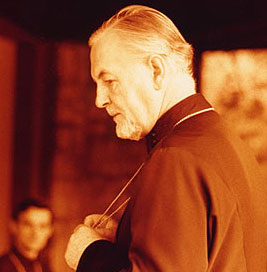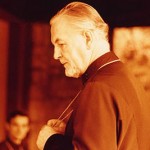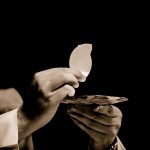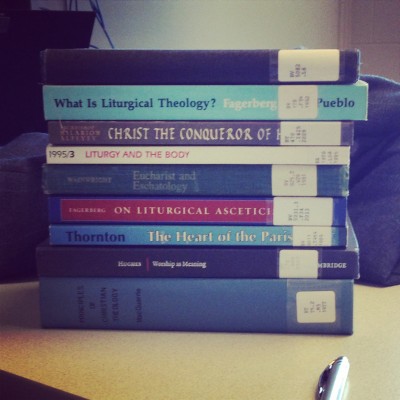This post is part of an ongoing series entitled, “Sunday with Schmemann.” If you have not yet read some of Fr. Alexander Schmemann’s works you can begin with my inaugural post here. Over the last few weeks I have been re-working my way through Schmemann’s classic, Introduction to Liturgical Theology.
In chapter 2 of Introduction to Liturgical Theology, Fr. Alexander Schmemann examines the problem of the Ordo in the firs centuries of the early Church. In particular, he writes about the reliance of Christian liturgical worship upon the Church’s Jewish roots and the centrality and coherence of the Eucharist in the liturgy of time.
Of significance is the Christian view of time. Do we believe time to be fulfilled, transcended, escaped, or entered into more deeply when we gather together for corporate worship and Eucharist. Here is what I think:
In the liturgy generally, and the Eucharist specifically, time does not cease. To suggest that it does is to suggest that time is not part of God’s redeeming work. Rather, a new dimension of time is introduced—brought crashing into our time—and that is God’s time. A holy understanding of past, present, and future and of their convergence in the celebration of the Eucharist, is the basis for our theology of time and the necessary defense against a renunciation of time.
Just as Christ’s Kingdom is both in the world and for the world, so too is our understanding of time one in which we see redemption, eschatological anticipation, and fullness in Christ.
With reference to the origins of Christian worship within the interpretatio judaica, Fr. Schmemann quotes a great number of liturgiologists. Oesterley writes:
“No one studying the pre-Christian forms of Hebrew worship and the prayer of the Church can fail to notice the similarity of atmosphere or fail to see that both are cast in the same form…In spite of all the differences they are undoubtedly one and the same type of worship.” P. 55
The Swedish liturgiologist Brillioth and the Englishman Dugmore concur, “The attempts to derive the Sacraments directly from the pagan mysteries are now regarded as one of the distortions of historical scholarship, a symptom of a childhood illness which is common to all youthful sciences.” (Y. Brillioth) “We can and must conclude that from the days of the Apostles the synagogue worship was the norm for Christian worship.” (C. W. Dugmore) p. 56-57
While the content of Christian worship was dramatically and forever changed by the cross and resurrection, the form of our worship dates back to both the Temple and synagogue. To miss this is to miss our incorporation into Jesse’s branch entirely. Schmemann puts it brilliantly:
“But for this reason also the newness of Christianity could not be felt and experienced in any other way than in relation to the old, that which it was fulfilling and consummating, to that which it was renewing. The Church is the New Israel, Judaism renewed in the Messiah and spread through all mankind; it is the renewed Covenant of God with His people…It is rather the inevitable liturgical expression of that relationship between the Old and New Covenants outside of which the preaching of the Christ-Messiah is impossible. Just as the New Testament does not replace the Old, but fulfills and completes it, so also the new cult, if it is to be the cult of the New Covenant, does not replace or abolish the old, but appears as its necessary fulfillment.” P. 60-63
Our faith and our worship are embedded, enmeshed, and engrained in the story of YHWH and Israel which has come to fulfillment through Jesus, the Faithful Israelite. To be a Christian is to be committed to and part of this corporate memory and to celebrate all that God has accomplished by, through, in, with, and for His people. Anything short of this will always result in the belief that the Church has someone superseded or replaced Israel rather than being grafted into her covenant family through the person, work, life, death, resurrection, and exaltation of the Christ-Messiah.













